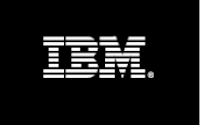Sell
EA based on customer’s demand
Week
3: Selling EA
This week you should focus on the need for
an EA. How can you convince management to support an EA
initiative? Find some examples online and share your thoughts.
Write about other EA activities you
engaged in the week.
The
need for an EA
Nowadays, with the development of EA
theory, more and more companies begin to realize the significance of EA while
developing their business. Among so many different EA, TOGAF is one of the most
mainstream enterprise architecture, which has over 15 years history. However, a
lot of companies in China are not familiar with EA and the executives sometimes
confuse different concepts, such as IT
solution architecture, business architecture and enterprise architecture.
IT
solution architecture includes elements like
software, data and IT infrastructure. The solution focus on the IT problems of
an enterprise and IT employees are the solution provider in general.
Business architecture includes element such as business process and information, organizational process and etc. It describes enterprises’ business performance and develops with the growth of business. In general, everyone in an enterprise would get involved in this architecture. However, most of them would not have a macro understanding of the enterprise’s business architecture.
Enterprise
architecture includes IT solution architecture and
business architecture. Compared with these two architectures, it is intend to
obtain three goals in an enterprise:
1.
Employees in different branches
could have a common view about the enterprise’s current situation and goals.
2.
Provides a platform that employees
could communicate with each other in more effective ways.
3.
Guarantee company’s policy and
decision’s execution and implementation.
Sell
based on customer’s demand
 Rational Tele logic System Architecture is
based on the need of financial institutions, which includes:
Rational Tele logic System Architecture is
based on the need of financial institutions, which includes:
1.
Aggregate and share information
among different systems, improve the correlation between information.
2.
Support newly added business
principle, such as “customer oriented”, “aggregated channel” and etc.
3.
Provide business management
development units and support information system update.
4.
Information mining and support
to make decisions.
The
value of EA to executive
Considering the advantages of Rational Tele
logic System Architecture, the following value to executive could be expected:
1.
Better ROI on IT project.
2.
Reduce cost of operating
enterprise.
3.
Lower or even eliminate the
risk of introducing IT system
4.
Optimizing the business process
in the enterprise.
5.
Clear IT plan for the
executives and shareholders.






